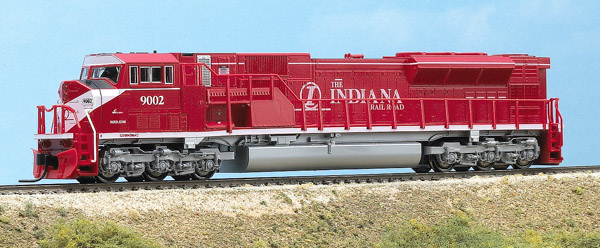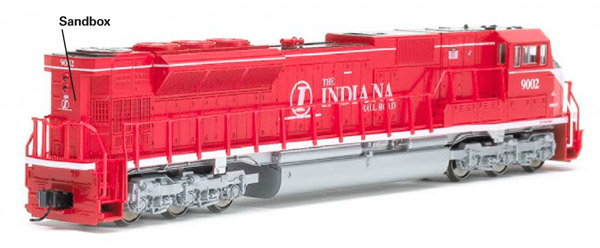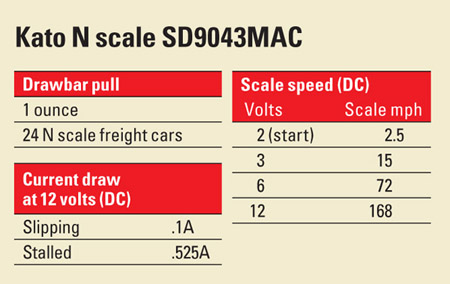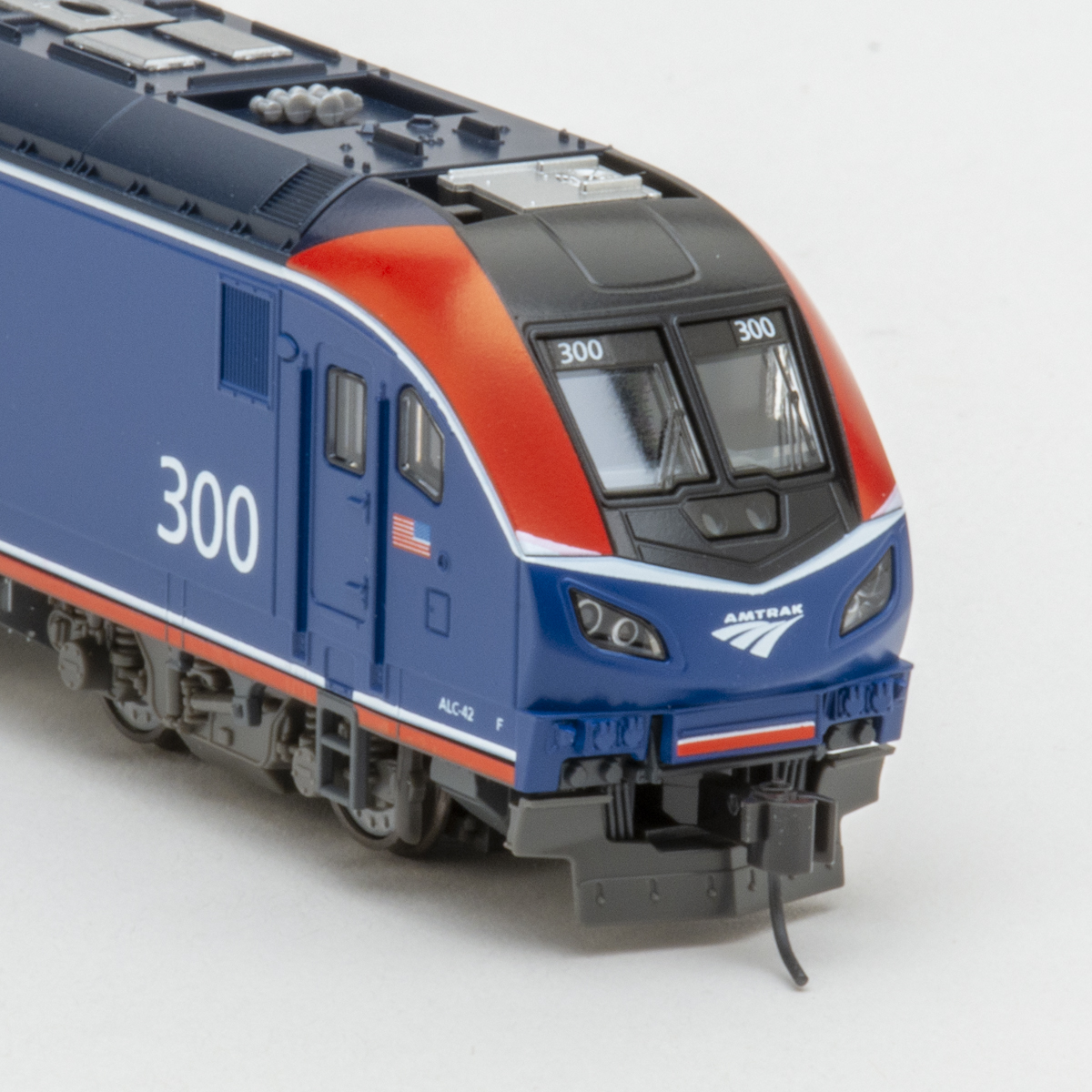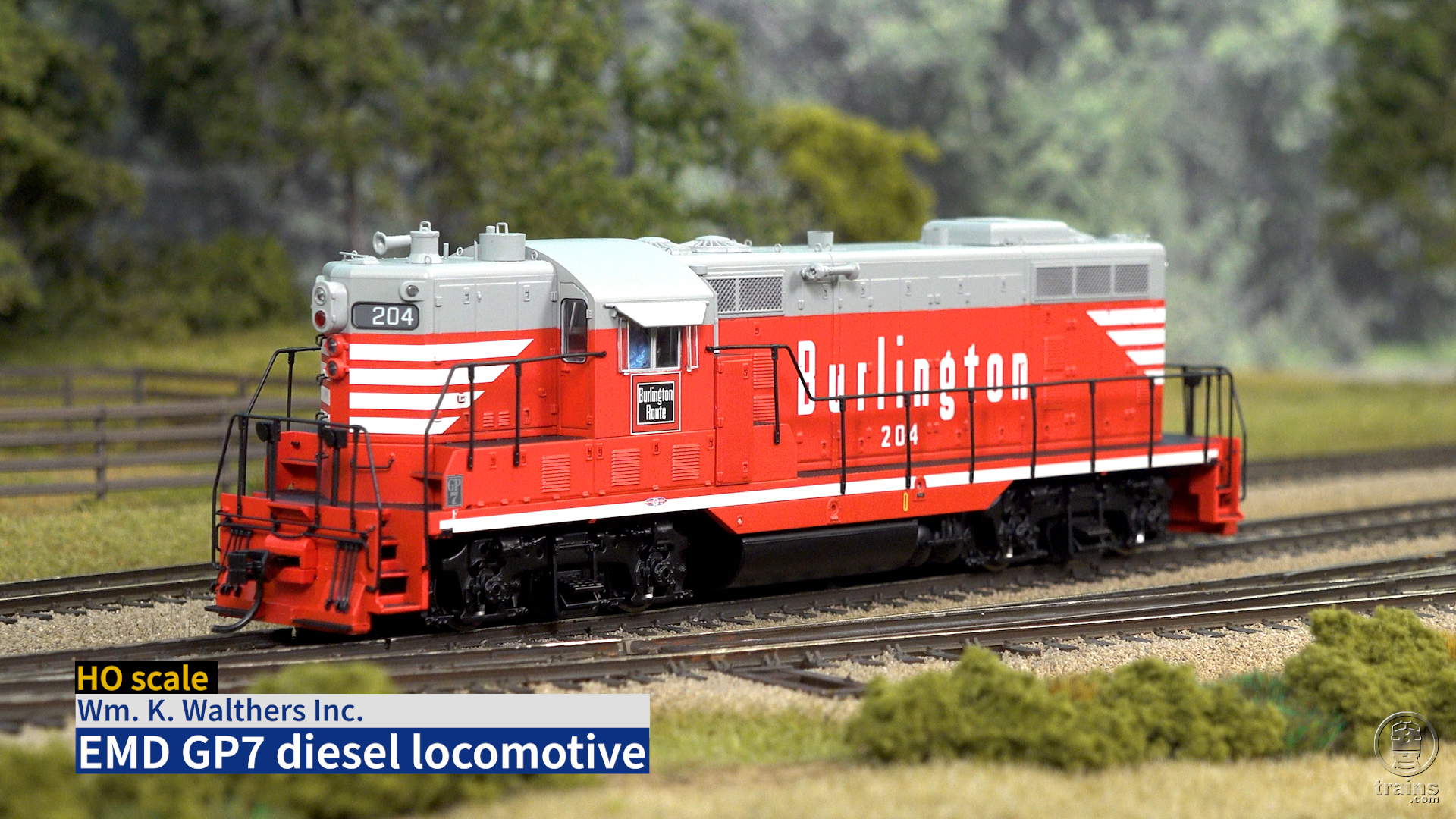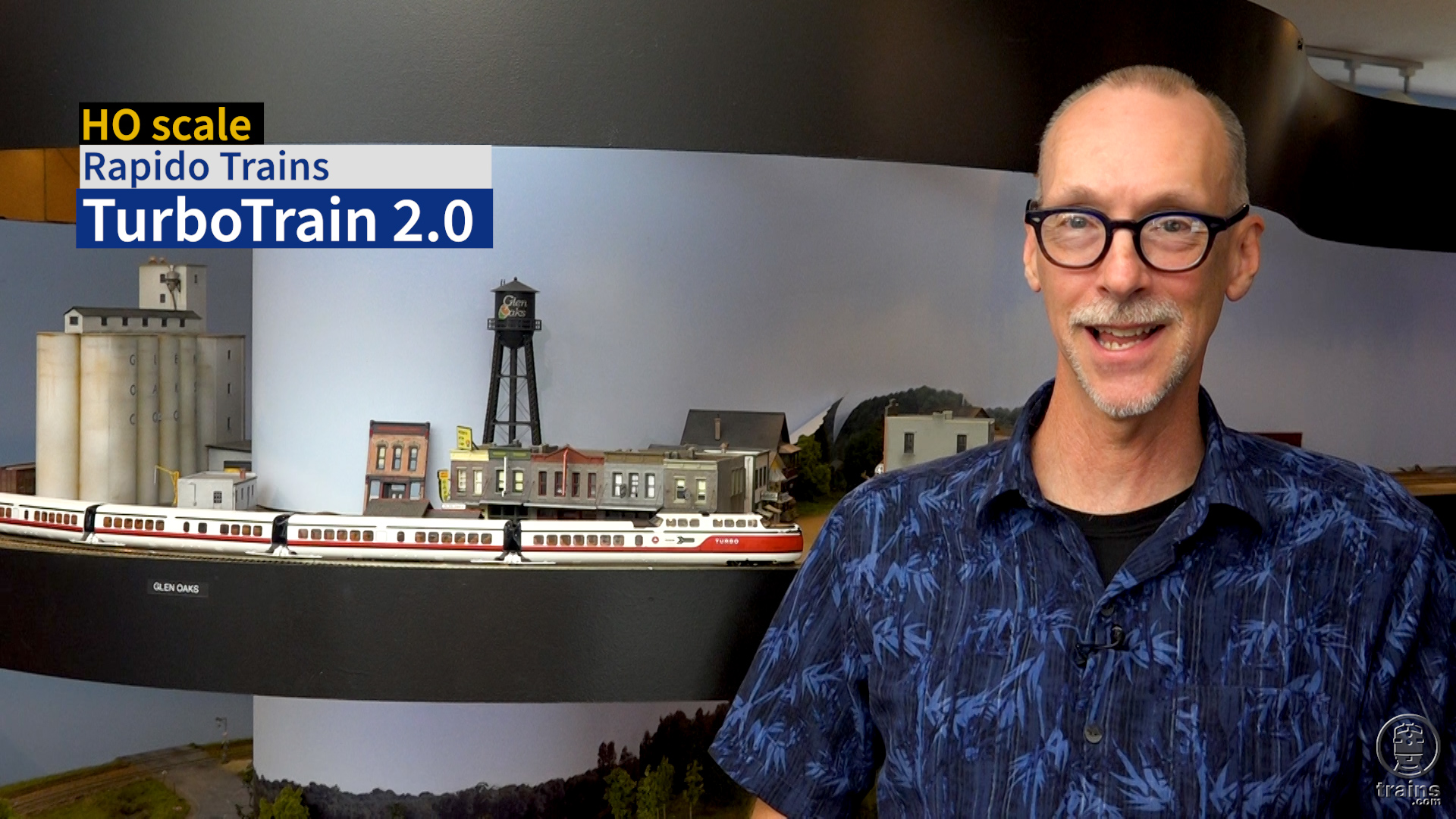The prototype. In 1995, General Motors Electro-Motive Division produced the 5,000 hp SD80MAC. Electro-Motive also intended to offer a 6,000 hp version, the SD90MAC. Because of
design problems with the new engine, EMD delivered the first SD90MACs to the Union Pacific with 4,300 hp engines. These engines were supposed to be upgraded later, but even when the 6,000 hp engines were ready, most of the 478 SD90MACs that were built kept the old engines. These are informally classed SD9043MACs. The upgraded 6,000 hp locomotives were classed SD90MAC-H.
Union Pacific and Canadian Pacific were the only railroads to purchase new SD90MACs. Leasing company CIT Group/Capital Finance (CETX) also purchased 40 of the locomotives. The Indiana Rail Road, a class II line founded in 1986, later obtained 14 of the CETX SD90MACs and painted them in INRD’s distinctive red and white livery.
The model is correctly detailed for an SD90MAC with nose mounted headlights and a rear sandbox that’s the same height as the hood. The SD80MAC has a shorter rear sandbox. The model is made primarily of plastic with sharply defined molded detail. The HTCR-II truck sideframes are especially impressive. The roof-mounted radiator fans are another standout feature. The individual fan blades are visible under see-through grills.
Separate detail parts include the three-chime air horn and the handrails. The latter parts are made of acetal plastic to resist breaking. The number boards and corner grab irons are modeler-
installed parts.
The model’s paint job matches the prototype INRD no. 9002. The lettering is straight and opaque. There’s clear color separation between the white stripes and the red body color. Small stencils, such as gps equipped, are legible under magnification.
The model does have a couple of minor differences from the prototype. On the prototype the step edges are painted white, while on the model they are red. The nose grab irons on the prototype are also red. However, since these parts are molded on the model, some of the grab irons are white.
The printed-circuit (PC) board with light-emitting diodes on both ends is attached to the top of the frame. Clear plastic parts direct the light to the headlights and ditch lights in the body shell.
The PC board can be replaced by drop-in DCC decoders from Digitrax (DN163K2) and Train Control Systems (K2D4). Model Rectifier Corp. also makes a DCC sound decoder for the model (no. 1808).
The model can handle curves with a tight 93⁄4″ radius, but looks much more realistic on broader curves. The SD90 ran smoothly around the 15″ curves on our N scale Salt Lake Route layout and negotiated turnouts without difficulty.
The Kato magnetic knuckle couplers worked fine with the freight cars on our layout. These couplers have modeler-installed trip pins. For modelers who prefer Micro-Trains couplers, that firm’s no. 2004 or no. 2001 (for curve radii tighter than 12″) are direct replacements.
Kato did a great job capturing the lines of this modern-era beast. The N scale locomotive’s smooth mechanism would make it right at home hauling a unit coal or intermodal consist.
Manufacturer
Kato U.S.A. Inc.
100 Remington Rd.
Schaumburg, IL 60173
katousa.com
Road names: Indiana Rail Road, Canadian Pacific, Union Pacific
Era: 1995 to present
Features
- All-wheel drive and electrical pickup
- Correctly gauged metal wheels
- Five-pole skew-wound motor with dual brass flywheels
- Kato magnetic knuckle couplers at correct height
- Minimum radius: 93⁄4″
- Weight: 5 ounces





